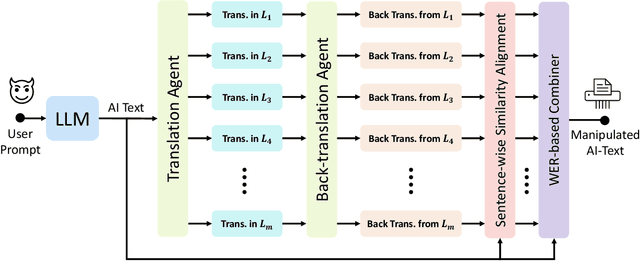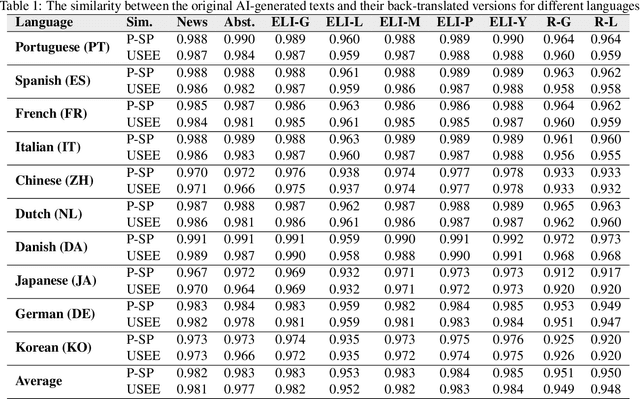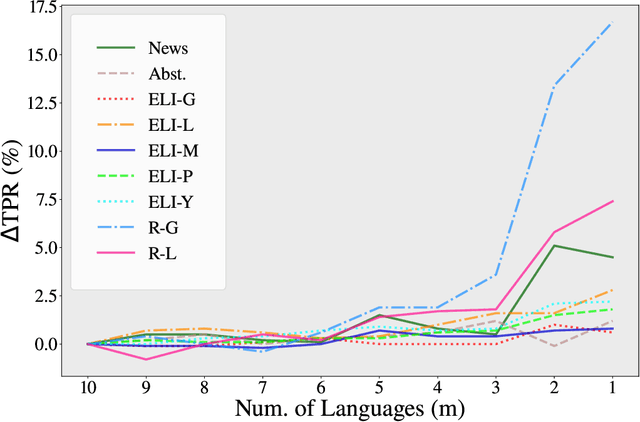ESPERANTO: Evaluating Synthesized Phrases to Enhance Robustness in AI Detection for Text Origination
Paper and Code
Sep 22, 2024



While large language models (LLMs) exhibit significant utility across various domains, they simultaneously are susceptible to exploitation for unethical purposes, including academic misconduct and dissemination of misinformation. Consequently, AI-generated text detection systems have emerged as a countermeasure. However, these detection mechanisms demonstrate vulnerability to evasion techniques and lack robustness against textual manipulations. This paper introduces back-translation as a novel technique for evading detection, underscoring the need to enhance the robustness of current detection systems. The proposed method involves translating AI-generated text through multiple languages before back-translating to English. We present a model that combines these back-translated texts to produce a manipulated version of the original AI-generated text. Our findings demonstrate that the manipulated text retains the original semantics while significantly reducing the true positive rate (TPR) of existing detection methods. We evaluate this technique on nine AI detectors, including six open-source and three proprietary systems, revealing their susceptibility to back-translation manipulation. In response to the identified shortcomings of existing AI text detectors, we present a countermeasure to improve the robustness against this form of manipulation. Our results indicate that the TPR of the proposed method declines by only 1.85% after back-translation manipulation. Furthermore, we build a large dataset of 720k texts using eight different LLMs. Our dataset contains both human-authored and LLM-generated texts in various domains and writing styles to assess the performance of our method and existing detectors. This dataset is publicly shared for the benefit of the research community.
 Add to Chrome
Add to Chrome Add to Firefox
Add to Firefox Add to Edge
Add to Edge